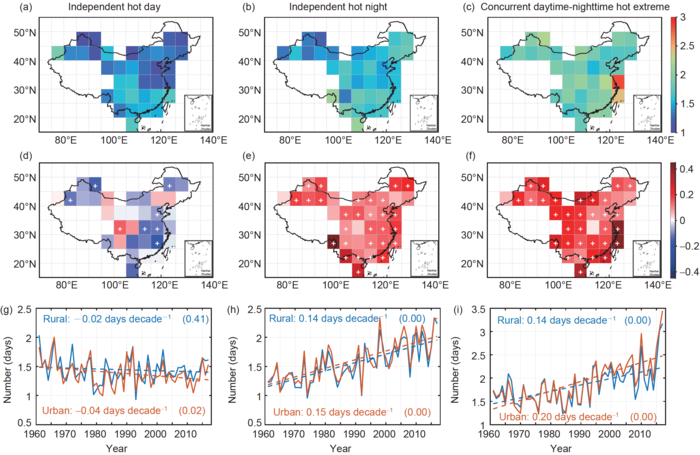Reviewed by Alex SmithSep 6 2021
The frequently occurring severe heatwaves against the backdrop of global warming seem to be a threat to human health and lead to tremendous economic loss.

Image Credit: Science China Press.
Even after extensive studies, many questions regarding heatwaves remain unanswered. Current studies generate separate hot nights and hot days artificially. However, they may co-occur or occur sequentially. A recent study attempts to study the in-depth structure of heatwaves, which is the configuration of hot days and hot nights during heatwaves.
The study titled “Changing structures of summertime heatwaves over China during 1961–2017” was published in the journal SCIENCE CHINA Earth Sciences (2021) Vol. 8 as a cover article. Zhiyan Zuo, a Professor at Fudan University, is the corresponding author of the study.
The researchers analyzed the heatwave structure variation over China during the past decade using the latest detailed observational data from the National Meteorological Information Center (NMIC) at the China Meteorological Administration, and satellite nighttime brightness index from the Defense Meteorological Satellite Program’s Operational Linescan System.
The study revealed the relationship between hot days and hot nights and the impact of urbanization and meteorological conditions on heatwave structures.
From an epidemiology perspective, hot days and hot nights have different impacts. Hot days can cause heat strokes and intensify the risk of ground-level ozone pollution, whereas hot nights can cause sleep deprivation and thermoregulation failure.
Continuous hot days and nights may cause harm to human health, as humans cannot get the necessary recovery from daytime heat at nighttime. Therefore, it is more accurate and practical to separately quantify hot days and hot nights when comprehending heat waves.
Heatwaves cannot be defined exactly. Deriving the heatwave periods based on different definitions may lead to varied conclusions. Instead of studying the properties and variations of the frequency, duration and intensity of heatwaves by given definitions, the current work aimed to study more about the variations of heatwave structures.
The study observed that the majority of summertime heatwaves were compound heatwaves, including both hot days and hot nights. During the heatwave process, hot days generally occurred one day or few days before hot nights. This was in line with the daily changes in radiation and meteorological conditions, such as the raising surface humidity and cloud cover and reducing solar radiation.
From 1961 to 2017, heatwaves were a common scenario at nighttime, and hot days were increasingly replaced by hot nights and concurrent hot days and hot nights. The effect was strengthened by the urbanization factor.
Details from the previous heatwave properties can help estimate the future variations. As the global temperature continues to increase and urbanization continues, it is predicted that the compound heatwaves with more concurrent daytime-nighttime hot extremes are bound to arise in the future. The study also offers instruction for researchers to tailor and choose appropriate heatwave indices.
The study was financially supported by the National Key Research and Development Program and the National Natural Science Foundation of China.
Journal Reference:
An, N & Zuo, Z., et al. (2021) Changing structures of summertime heatwaves over China during 1961–2017. Science China Earth Sciences. doi.org/10.1007/s11430-020-9776-3.